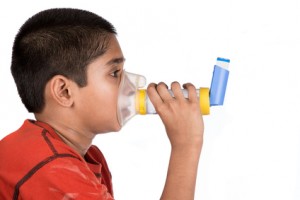Do Toxic Homes Cause Asthma?
Author: Dr. Stephen Chaney
 Everybody is going green. Biodegradable cleaners are finally in fashion. But did you realize that many of the cleaners that you buy in the supermarket – and some of the biodegradable cleaners that you buy in the health food store – release toxic fumes in your home that can adversely affect the health of you and your children?
Everybody is going green. Biodegradable cleaners are finally in fashion. But did you realize that many of the cleaners that you buy in the supermarket – and some of the biodegradable cleaners that you buy in the health food store – release toxic fumes in your home that can adversely affect the health of you and your children?
For this week’s story, I’m going to focus on just one aspect of this topic – household chemical exposure and childhood asthma.
Let me start with a bit of background information: The prevalence of childhood asthma increased 74% between 1980 and 1994 and has continued to increase in the years since.
The causes of this rapid increase in asthma prevalence are likely to be complex, but evidence has accumulated in recent years that some of the increase may be caused by early exposure to toxic chemical fumes in the home.
Are household cleaners becoming more toxic?
The American consumer keeps demanding cleaners that work better. It’s considered a big plus if they require no effort and are easy to use. Don’t bother with messy liquids and pastes – just spray it on. And manufacturers have been willing to oblige by adding ever more exotic chemicals to household cleaners and putting them in aerosol spray cans. And of course no one opens their windows any more. That would be wasting energy and contributing to global warming.
The result is that these toxic chemicals accumulate in the air that we breathe in our own homes. In fact, the Environmental Protection Agency has stated that the air inside our homes is often more polluted than in Los Angeles or New York on a smoggy day.
What do the studies show?
A number of studies have pointed to an association between these toxic household fumes and childhood asthma, but I’d like to focus on one particularly good study on this topic that was published recently in the European Respiratory Journal (31: 547-554, 2008).
This study measured the household chemical exposure of 7,162 pregnant women in England and looked at the incidence of asthma in their children at age 8.5 years. A maternal composite household chemical exposure (CHCE) score was derived by measuring the pregnant mother’s exposure to a number of common household products known to contain toxic chemicals.
The household products used most frequently were disinfectants (87.4%), bleach (84.8%), aerosols (71.7%), air fresheners (68%), window cleaners (60.5%), carpet cleaners (35.3%) and pesticides/insecticides (21.2%). (For information on the toxic chemicals in these and other common household products visit: http://www.householdproducts.nlm.nih.gov/products.htm)
Asthma was quantified based on persistent wheezing (reported by the parents) and several lung function tests that were administered at age 8.5 years. To make sure that the asthma was not caused by simple allergies the children were also given a skin prick test against a panel of 6 common childhood allergens (house dust mites, cats, mixed grass, mixed nuts, peanuts and milk). The study also controlled for confounding variables such as exposure to tobacco smoke, damp housing, pets in the home and maternal history of asthma. In short, this was a very large and particularly well controlled study.
And the results were clear. Higher household chemical exposure during pregnancy was associated with a 41% increase in childhood asthma in children with no known allergies.
The Bottom Line:
What does that mean to you and me? It means that it is not enough to select household cleaners that are safe for the environment. We also need to select products that we use in our homes on the basis of their safety for us and our family – not just on the basis of cost and convenience.
These statements have not been evaluated by the Food and Drug Administration. This information is not intended to diagnose, treat, cure or prevent any disease.
